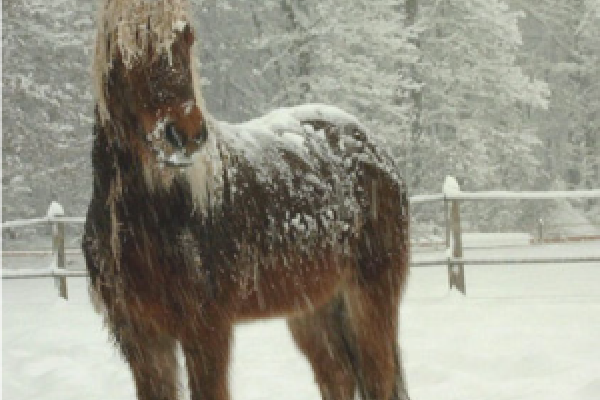
Learn Survival Icelandic
Wikitravel users have collectively created a free Icelandic phrasebook with the goal of making it possible for travelers to "get by" while traveling in areas where Icelandic is spoken.
Wikitravel phrasebooks are available in many languages and each one varies in depth and detail. Most of the phrasebooks include a pronunciation guide, a general phrase list, information about dates and numbers, a color list, transportation-related phrases, vocabulary for shopping and phrases for eating and drinking. Some are even more in depth, and all are free!
From Website
Icelandic is spoken in Iceland. It is a North Germanic language, related to Danish, Swedish, and Norwegian, but unlike them retains the full set of conjugations and declensions that Old Norse had. That and its lack of Latinate words make it a difficult language for English speakers. On the other hand, speaker of German will find many elements of Icelandic grammar familiar, as both languages retain various conjugations and declensions from Proto-Germanic, which have been lost in other Germanic languages.
Icelandic nouns are declined in four cases, two numbers, and the presence of the definite article. Verbs have person and number, which is used with pronouns.
Icelandic (íslenska) is a North Germanic language, the main language of Iceland. Its closest relative is Faroese.
Icelandic is an Indo-European language belonging to the North Germanic or Nordic branch of the Germanic languages. Traditionally, it was the westernmost of the Indo-European languages prior to the colonisation of the Americas. Icelandic, Faroese, as well as Norwegian formerly comprised West Nordic; Danish and Swedish comprised East Nordic. The Nordic languages are now divided into Insular Nordic and mainland Scandinavian languages. Norwegian is now grouped with Danish and Swedish because of its mutual intelligibility with those languages due to its heavy influence from them over the last millennium, particularly from Danish.
Most Western European languages have greatly reduced levels of inflection, particularly noun declension. Contrarily, Icelandic retains an inflectional grammar comparable to that of Latin and that of the medieval Germanic languages including Old Norse and Old English. The main difference between Icelandic and Latin inflectionally is in verbs. Nouns, adjectives, pronouns, and adverbs are handled similarly in both languages. Icelandic possesses many instances of oblique cases without any governing word, like Latin. For example, many of the various Latin ablatives have a corresponding Icelandic dative.
The vast majority of Icelandic speakers live in Iceland. There are about 8,165 speakers of Icelandic living in Denmark, of whom approximately 3,000 are students. The language is also spoken by 5,112 people in the USA and by 2,170 in Canada (mostly in Gimli, Manitoba). Ninety-seven percent of the population of Iceland consider Icelandic their mother tongue, but in communities outside Iceland the usage of the language is declining. Extant Icelandic speakers outside Iceland represent recent emigration in almost all cases except Gimli, which was settled from the 1880s onwards.
The Icelandic constitution does not mention the language as the official language of the country. Though Iceland is a member of the Nordic Council, the Council uses only Danish, Norwegian and Swedish as its working languages. The council does, though, publish material in Icelandic. Under the Nordic Language Convention, since 1987, citizens of Iceland have the opportunity to use Icelandic when interacting with official bodies in other Nordic countries without being liable for any interpretation or translation costs. The Convention covers visits to hospitals, job centres, the police and social security offices, however the Convention is not very well known and is mostly irrelevant as many Icelanders born after the 1940s have an excellent command of English anyway. The countries have committed themselves to providing services in various languages, but citizens have no absolute rights except for criminal and court matters.
The state-funded Árni Magnússon Institute for Icelandic Studies serves as a centre for preserving the medieval Icelandic manuscripts and studying the language and its literature. The Icelandic Language Council, comprising representatives of universities, the arts, journalists, teachers, and the Ministry of Culture, Science and Education, advises the authorities on language policy. The Icelandic Language Fund supports activities intended to promote the Icelandic language. Since 1995, on November 16 each year, the birthday of 19th century poet Jónas Hallgrímsson is celebrated as Icelandic Language Day.
The modern Icelandic alphabet consists of 32 letters and is based upon a Latin alphabet with diacritics, in addition it includes the character eth Ðð and the runic letter thorn Þþ (pictured to the right). Ææ and Öö are considered letters in their own right and not a ligature or diacritical version of their respective letters.
Often the glyphs are simplified when handwritten, for example the ligature æ (considered a separate letter) may be written as ae, which can make it easier to write cursively.Icelandic is spoken in Iceland, Denmark, Norway, USA and Canada and has the following linguistic geneology: Indo-European Languages > Germanic Languages > North Germanic Languages > West Scandinavian Languages > Icelandic